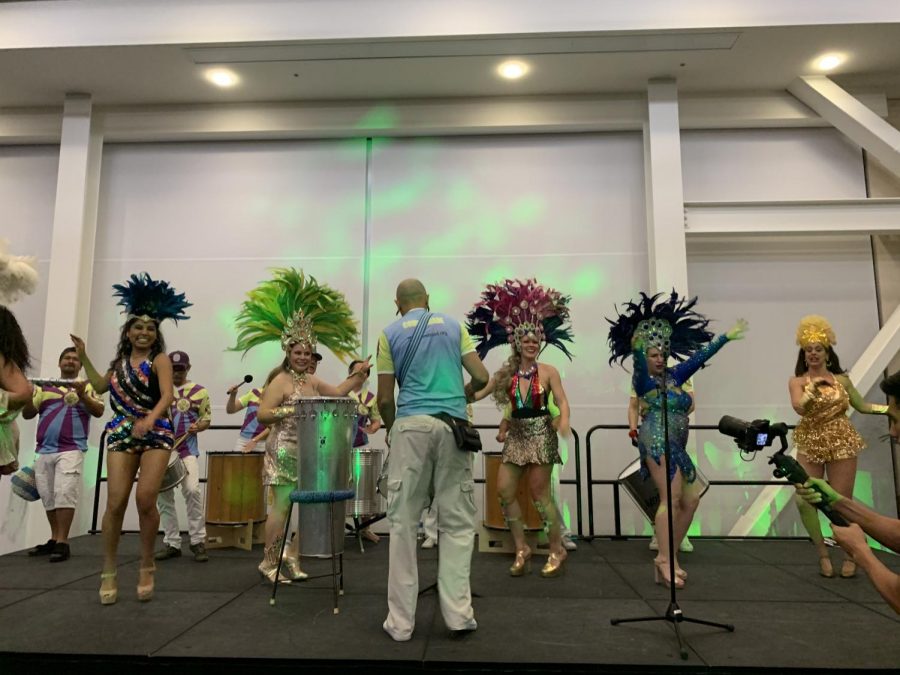Students celebrate the energy of Brazilian culture with food, dancing and games
Dancers on stage alongside the Super Sonic Samba School.
March 8, 2020
A warm welcome from the Super Sonic Samba School kicked off the main event of the Brazillian Carnival on Feb. 21. Students and faculty watched as the music, rhythms and dance of the Latin American culture filled the room and, together, experienced what is traditionally a five day celebration held on the streets of Brazil.
Hosted by the Latin@ Center, the festivities lasted from 5 p.m. to 8 p.m. and began with students sitting at decorated tables and collecting a bingo card from staff with questions about other students.
As people began to move around and learn more about their fellow students, food and drinks were served, including an assortment of seasonal vegetables and Brazillian guaraná sodas.
Dr. Renzo Lara, director of the Latin@ Center, introduced Super Sonic Samba School to the stage. The organization originated as a protest group in the 1990s but now works to bring awareness to Brazilian culture through music and dance. Their samba performance consisted of drums, a guitar, agogo bells and five or six female dancers who wore traditional Carnival costumes and danced samba to the beat of the music.
The performance was fast, lively and rhythmic. One of the dancers, Gladys Altafini, described the experience, saying, “We all feel the drum, like our heart beating.”
Melissa Mejia, a student attending the event with friends, said, “It was like the Olympics. It was beautiful. I thought it was just gonna be drums and everything, I didn’t think there’d be dancing. I was just awestruck.”
As the performance continued, dancers started to take people from their chairs into the open floor in front of the stage. Reluctant at first, students seemed to quickly like the dancing and soon a crowd was in front of the stage, surrounded by dancers.
The excitement and size was no surprise to Dr. Lara. “This one we wanted to go bigger,” he said about this year’s Brazilian Carnival. “Last year we did something small. We had just Brazilian appetizers and a short presentation. But this one we wanted to go bigger so we can express the liveliness of our Brazilian culture and Latin America.”
The addition of the Super Sonic Samba School’s energetic performance seemed to be exactly what Dr. Lara hoped for. After the performers said their goodbyes and packed up their instruments, students quickly began to move around the room to see the other activities that were set up.
They found a table with rhinestones, feathers, glue and wooden masks that students could decorate and take home with them. A green sign that read “Brazillian Carnival” was hung up near the left wall; an attendant took Polaroids of anyone who wanted one in front of it. Students could also play a game of Brazilian checkers or spin a wheel for stickers, candy and T-shirts if they turned in a blacked-out bingo card.
With students leaving around 8 p.m., many took reminders of the performance and festivities with them. “Yeah. I got a T-shirt! We both got a T-shirt,” said Mejia before leaving.







